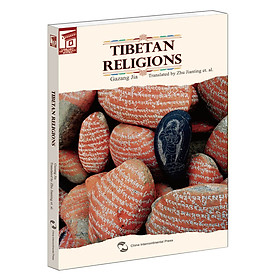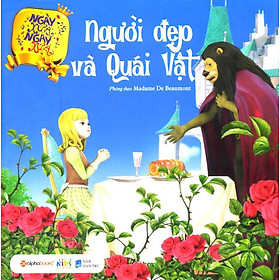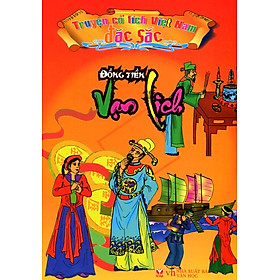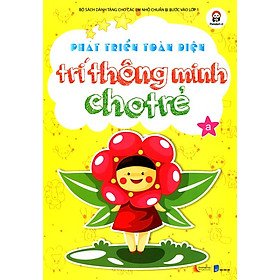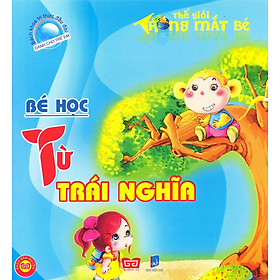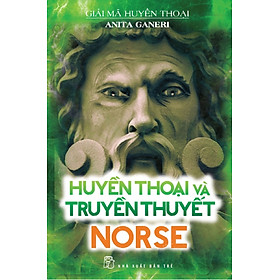Tibetan Religions
Standing on the snow-covered plateau, which is recognized as the earth's peak, with an average elevation of about 4,500 meters, Tibet is an extremely attractive place by virtue of its grandness....
Kích thước: 25 x 20 x 3 cm
SKU: 5247220440604
Standing on the snow-covered plateau, which is recognized as the earth's peak, with an average elevation of about 4,500 meters, Tibet is an extremely attractive place by virtue of its grandness. For thousands of years, people living on this mystical land created a spiritual world with strong characteristics of the plateau culture through harmony with the nature.
Tibetan religions can be likened to a flag of life on the Qinghai-Tibet Plateau, a unique landscape of spiritual world of the Tibetan people as well as a window to observe the culture of the Qinghai-Tibet Plateau.
The Tibetan religious culture consists of extensive and profound elements. Besides local sorcery culture and the Bon region culture, it also includes Tibetan Buddhism, which was derived from integrating religion with a great amount of social and secular cultural elements. This is in addition to other religions demonstrating the characteristics of the plateau culture. The emerging, evolution and distribution of the Tibetan religions reflect the interpenetration and integration of religious culture characters and features of secular culture. A Tibetan proverb said, “Every place has a dialect, and every Lama belongs to a religious sect.” Not only does the Tibetan Buddhism show distinct characteristics that are different from other Buddhism sects, but also other religions existing on the plateau show unique characteristics different from other religions in other areas. Highlighted characteristics related to the plateau are composed of unique cultural features and styles of the Tibetan religions.
Why did the ancestors of the people living on the plateau worship mountains, rivers and souls? Why did worship to heroes derive from worship to ancestors? How did the mysterious and primitive sorcery culture become the breeding ground for Tibetan religions? What are the basic structure and background of the Tibetan Buddhism culture? How did external Buddhist cultures integrate with the local Tibetan cultures (including the sorcery culture, Bon religion, secular and folk culture)? Why is it believed that Tibetan literature and art bearing different content and in different forms contain special religious cultural deposits? Why have aromatic plant burning and other religious customs been preserved to this day?
Through a simple content structure, , the book makes specific analysis on the development of the Tibetan Bon religion and related monasteries; the origin, development and sects in Tibetan Buddhism; the introduction and development of Christianity in Tibet; the history of Islam in Tibet and cultural background as well as the religious life of Muslim families. It describes and interprets Tibetan religions from a unique perspective highlighting the plateau culture.
CHAPTER ONE The Bon Religion
Ⅰ.Dor-Bonism period
Ⅱ.Cha-Bonism period
Ⅲ.Jo-Bonism period
ⅠV.The monasteries of the Bon religion
CHAPTER TWO Tibetan Buddhism
Ⅰ.Origins of Tibetan Buddhism
Ⅱ.The formation of Tibetan Buddhism
(Ⅰ)The Buddhism promotion achievements—ofTrisong Detsen
(Ⅱ)Measures ofTritsuk Detsen on promoting Buddhism
(Ⅲ)King Lang Darma’S persecution of Buddhism
Ⅲ.Development of Tibetan Buddhism
(Ⅰ)Propagation of Buddhism from Eastern Tibet
(Ⅱ)Propagation of Buddhism from Ⅰndia
Ⅳ.Buddhist Sects
(Ⅰ)The Nyingmapa
(Ⅱ)The Kadampa
(Ⅲ)The Sakyapa
(Ⅳ)The Kagyupa
(Ⅴ)TheJonangpa
(Ⅵ)The Gelugpa
(Ⅶ)The Zhibyedpa
(Ⅷ)The Gcodyulpa
(Ⅸ)The Bulugspa
Ⅴ.Tibetan Buddhism monasteries
(Ⅰ)The Monasteries ofthe Gelugpa
(Ⅱ)The Monasteries of the Nyingmapa
(Ⅲ)The Monasteries ofthe Kagyupa
(Ⅳ)The Monasteries ofthe Sakyapa
(Ⅴ)The Monasteries ofthe Jonangpa
CHAPTER THREE Christianity
Ⅰ.HistoryofRomanCatholicisminTibet
Ⅱ.History of rise and decline of Christianity in Batang
(Ⅰ)Emerging and decline of Catholicism
(Ⅱ)Emerging and decline of Christianity
Ⅲ.History and current development ofCatholicism in Yanjing
(Ⅰ)Checkered history ofCatholicism in Yanjing
(Ⅱ)Catholic Church and its Tibetan believers
CHAPTER FOUR Ⅰslam
Ⅰ.Mosque and Muslims in Lhasa
(Ⅰ)The development ofthe Great Mosque 0f Lhasa
(Ⅱ)Life ofMuslim residents ofLhasa
Ⅱ.History and culture ofthe Mosque of Qamdo
(Ⅰ)Historical evolution and cultural background of the Mosque
of Qamdo
(Ⅱ)The Mosque of Qamdo and Muslim families today




{"created":1520872593000,"creator":"system","id":53961314,"langId":2,"modified":1520872593000,"modifier":"system","propertyId":10789,"propertyValue":"","wareId":600164812,"yn":1},{"created":1520872594000,"creator":"system","id":53961639,"langId":2,"modified":1520872594000,"modifier":"system","propertyId":10790,"propertyValue":"","wareId":600164812,"yn":1}]
Giá sản phẩm niêm yết của History Tibetan Religions trên các sàn TMĐT đã bao gồm thuế theo luật hiện hành. Tuy nhiên tuỳ vào từng loại sản phẩm hoặc phương thức, địa chỉ giao hàng mà có thể phát sinh thêm chi phí khác như phí vận chuyển, phụ phí hàng cồng kềnh, ...
Mức giá và các nhà cung cấp được liệt kê tại đây chỉ dùng để bạn tham khảo. Khi quyết định mua hàng bạn cần xem xét thêm về đánh giá của khách hàng tại shop đó. Sau cùng bạn chọn mua sản phẩm từ nhà cung cấp mà bạn cho là uy tín nhất với mức giá hợp lý nhất. Chúng tôi không trực tiếp bán hàng cũng như vận chuyển và không chịu bất kỳ trách nhiệm nào về quyết định mua hàng của bạn.
| Kích thước: | 25 x 20 x 3 cm |
|---|---|
| SKU: | 5247220440604 |

